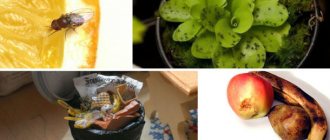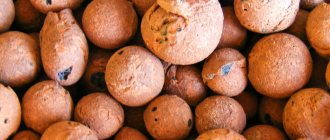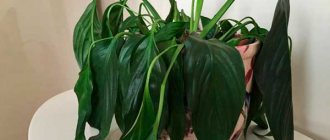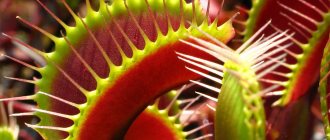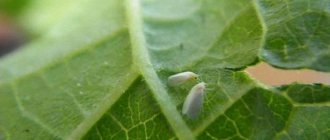Ground fleas: basic information
What they look like
The parasite is small in size - up to 3 millimeters in length. The body is flat, brown. It has three pairs of limbs, of which the hind pair is especially developed. Thanks to such long legs, the earth flea moves very quickly, jumping 50 cm in length and height. The legs have a large number of bristles, which securely hold the insect on clothing, human shoes, or animal fur. Because of this ability, the insect can migrate long distances, move from the street to the house, and climb to the upper floors of multi-story buildings.
What do they eat?
Ground fleas feed on human blood. In the absence of a person, they can also bite domestic animals, livestock, and birds. The flea can smell the blood and sweat of a potential victim 2–3 meters away. To function normally, an adult insect needs to feed once every 2–3 days, sucking 1 ml of blood at a time. The parasite can make several punctures in the skin until it finds the place where the capillaries and vessels are closest to the surface.
How do they reproduce and how long do they live?
The earth flea lives on average about two years, which is longer than the lifespan of most insects. A flea produces approximately 500 new insects during its life. A sexually mature female flea becomes capable of reproduction only after feeding. Two days after saturation, she lays up to 50 eggs, from which larvae appear after 10 days. They are very afraid of daylight, so they hide in secluded places, where they grow a cocoon around themselves for one to three weeks. They can stay in this cocoon from 7 to 200 days, after which the cocoon turns into a flea.
What do house fleas look like?
Cats and dogs
Cat fleas are the most common type of parasite. They feed on the blood of not only cats, but also dogs (and even humans). This type of insect most often attacks people. Fleas can grow up to 5 mm in length. They have a dark body, slightly flattened on the sides. The mouthparts of insects are piercing-sucking. Their bite is extremely painful, leading to skin irritation, itching, and rashes. When scratching, pustular inflammation appears.
Dog fleas feed on the blood of dogs. If they do not find a main source of food, they can switch to a cat or person to satisfy their hunger. This type of parasite can survive without food for several months. Fleas' mouths are designed in such a way that they penetrate the skin and suck in blood.
The body of the insect is flat. Covered with a large number of bristles and ridges, due to which there is strong adhesion to dog hair. The structure of the body allows the flea to easily jump from one animal to another.
Flea habitats in the house.
Bed and linen fleas live in sleeping areas. They appear if the bed linen has not been washed for a long time or dust has accumulated in the crevices of the bed.
They attack people at any time of the day. Such insects reach a length of 2-3 mm.
Herbal and earthy
Grass fleas live in grass and feed on the sap of trees, shrubs and plants. Ground insects live in the sand or in the ground, but they satisfy their hunger only with blood. Outwardly, they strongly resemble ordinary parasites. They grow to 2-3 mm in length. The proboscis ends in the middle of the chest. When fleas appear in a house, they can bite animals and humans. The bite of such an insect causes severe redness around the wound, since the substance it secretes into the blood is a strong allergen.
As you know, you need to know the enemy by sight. In order not to confuse fleas with other insects that can live in an apartment (for example, bedbugs), you need to remember some features of the appearance of these parasites:
- size - the body length of an adult reaches 0.1-0.5 cm;
- color - the color of the flea can be black, red, brown or dark red;
- structure - the body is slightly flattened on the sides, covered with tiny bristles and spines; there are six legs on the abdomen (like all insects), no wings;
- nature of movement - fleas are very jumping; in one jump they can cover a distance of up to 0.5 in height and 1 m in length.
- lifestyle - these insects are active at any time of the day; if they are hungry, they go out to look for prey both during the day and at night.
Habitats
Ground fleas, as the name suggests, live in the ground. The quality of the soil does not matter to them, but in sand and loose soil they are more mobile. For the winter, they burrow to a considerable depth - up to 20 cm, pupate and thus wait out the frosts. When it gets warmer outside, fleas come to the surface; there are especially many of them after rains and with the onset of heat.
Most often they can be found in the basements of apartment and private buildings, industrial or commercial premises. Pests prefer abandoned spaces with unsanitary conditions, but can settle anywhere, even where they keep order. They love warm rooms with high humidity.
Since earth fleas feed on blood, they move around in search of prey. Most often, residents of the first floors of high-rise buildings suffer from them.
Are bites dangerous for humans?
Earth flea bites are painful. Immediately after the insect has pierced the skin and drunk blood, a red spot appears in this place, its size reaches 2 cm. It can swell and rise above the skin. The most unpleasant symptom is unbearable itching. It can be muffled by smearing the bite site with pharmaceutical anti-allergy gels. If the body continues to itch, it is necessary to treat the skin with antiseptic agents, for example, chlorhexidine or miramistin. This will prevent infection from entering the wounds.
What is the danger:
- If there are too many stings, a person may experience anaphylactic shock. At the first signs of this most dangerous condition, you should immediately consult a doctor.
- Allergic reaction. There are people with a high tendency to allergies. They may develop pulicosis due to flea bites. Children suffer from it more often. The bite sites are very itchy, irritated, and hemorrhage occurs under the skin - purple.
- Inflammatory phenomena and processes. An infection can get into the puncture, causing inflammation to develop, and the bite turns into an abscess that needs to be treated with iodine. It is better to seek treatment from a dermatologist.
- Dangerous diseases whose pathogens are carried by fleas: encephalitis, plague, listeriosis, tularemia, typhus, salmonellosis, hepatitis, as well as helminthiasis of various types.
First aid
Most often, fleas bite on the ankles, ankles, and feet. The bites may not be visible, but there is no escape from the itching. A compress will help relieve discomfort; you can also anoint the skin with antihistamine gels. If there are no symptoms other than itching, that is enough. Over time, the itching will subside. But if signs of intoxication or allergies appear, you should immediately consult a doctor.
How to help a child with flea bites
Children are much more likely to experience allergic reactions. The spots may merge into one large spot. Itching is relieved, as in adults, with cold compresses. It is necessary to ensure that the child does not scratch the affected areas. If there are a lot of bites, it is better to seek medical help, since not all antihistamines to relieve symptoms can be taken by children. Only a doctor can prescribe a specific drug and dosage.
Damage caused
First of all, trees and shrubs in gardens will suffer from the actions of fleas. Signs of plant infection:
- The leaves wrinkle and curl into tubes;
- A sugary cobweb is visible on them;
- There are spots on the bottom of the leaves;
- Holes are visible on the stems;
- Plants begin to wilt.
In residential areas, grass pests also cause inconvenience to humans. Insects are often the culprit of numerous bites. Bite location:
- Itchy;
- Turns very red;
- It starts to swell.
This reaction to a bite is caused by the fact that flea enzyme, which is a strong allergen, enters the bloodstream. Bite areas must be treated immediately:
- First, rinse the bitten area with clean water and treat with an antiseptic;
- Apply ice to the affected area for several minutes to relieve itching and pain;
- After the bite, apply a cream or lotion containing essential oils.
IMPORTANT: Consult a doctor immediately if the pain does not stop and the affected area is severely inflamed.
Methods of disposal
When there are not too many fleas in the apartment, chemical insecticides help against them. If you follow the manufacturer's recommendations, they can quickly kill all insects in the room without causing harm to household members. If for some reason it is impossible to use chemicals, you can use folk remedies to remove fleas. But we must remember that most of them only repel insects, but do not kill them, much less destroy eggs and cocoons with larvae.
The biggest problem with earth fleas is that they come into apartments and houses again and again from the street, basement, and common areas in apartment buildings. Because of this, ordinary household means of bullying simply do not work and do not give lasting results. This is why you have to call professional exterminators to completely remove fleas. This is the most effective method of insect control. You can process an object of any size. For example, in residential buildings they treat not only the apartment, but also stairs, basements, attics and other places where parasites can hide. Professionals use special equipment and poisonous agents that act not only against adults, but also destroy eggs, pupae and larvae.
Medicines
Also, modern medicine offers a large number of different ointments that help against bites of small fleas, which can be identified from the photo. They promote accelerated regeneration of the skin, relieve itching and other unpleasant sensations that occur after bites.
Fenistil.
Fenistil has a wide range of actions, including antipruritic. The composition of the drug contains dimethindene maleate, which blocks histamine H1 receptors. They are the ones that cause skin reactions such as itching, redness, and rash. Before treating the skin with this drug, it is necessary to lubricate it with some kind of antiseptic. Or at least wash it under water with antibacterial soap. Fenistil should be spread in a thin layer, then a bandage should be applied. It will start working in a couple of minutes and you will feel immediate relief. The drug is contraindicated for babies under one year of age.
Diphenhydramine.
Another effective ointment that helps against flea bites and other blood-sucking parasites. It not only eliminates allergic reactions and itching, but also relieves irritation, swelling, and has an analgesic effect. Diphenhydramine has two release forms:
- Psilo-balm – gel;
- Dermadrin - ointment.
These drugs are based on an emulsion that has a cooling effect. It can last for several hours. The product should be applied in a thin layer using a smoothing action. It is instantly absorbed into the skin and does not leave a sticky film.
Hydrocortisone ointment.
Hydrocortisone ointment is a universal drug. It is able to stop an allergic reaction and has antipruritic and anti-inflammatory effects. This drug has a cream-like consistency, so it is absorbed very well. To achieve a sustainable result, 2-3 applications are enough. But the drug has several contraindications. Thus, it cannot be used on children under two years of age, pregnant women, and for viral or fungal skin lesions.
Sinaflan.
Sinaflan is an analogue of hydrocortisone, which is also used externally. However, the composition contains glucocorticoid hormones, so it cannot be used by everyone. The product is prohibited for use by pregnant and lactating children, babies under one year old, with cancer, tuberculosis, and trophic ulcers. The product has antipruritic, decongestant and antiallergic effects, therefore it alleviates the condition of bites from fleas, wasps, mosquitoes and other insects.
The preparations must be used twice a day on clean skin. A thin layer is enough for the medicine to work. It is recommended to apply a bandage to the treated skin. If the affected area continues to hurt and is very swollen, you should urgently make an appointment with a therapist.
Methods of controlling parasites
Not everyone understands how to properly deal with earthen fleas that have settled in the house. There are several methods of disinfestation.
- Treating your home with insecticides. This method is very labor-intensive, but most effective. It is used by sanitary and epidemiological services.
- Freezing. The method is effective in the winter season. The fact is that fleas die at temperatures from -20 degrees, so they will be destroyed in a few hours. You just need to insulate the water supply and heating pipes to prevent a break.
- Exposure to heat. This method requires special equipment and is therefore carried out only by professionals. The processing temperature must be at least +45 degrees so that all insects die.
Most often, owners of infested apartments also use insecticides to get rid of fleas that have infested the house. You can see from the photo how small they are, but it’s not easy to get them out. Hardware stores sell a large number of available drugs, which come in several forms:
- gels. These are very effective drugs whose task is to repel parasites. Drops of the drug should be placed at an equal distance from each other. Gels can be squeezed onto the floor or onto paper;
- concentrates. They must be diluted with water to avoid poisoning. The prepared solution should be poured into a spray bottle, then treat all places where parasites often appear;
- powders. They also need to be scattered evenly along the walls in places favored by insects;
- sprays. The most popular form of insecticide. Processing must be carried out indoors. It is important not to miss the slightest gap, otherwise the procedure will have to be repeated;
- crayons. Used on almost all surfaces;
- traps. Special devices that lure insects with their smell, after which they kill them or make them unable to move.
Before carrying out chemical treatment, you need to do a wet cleaning in all rooms, remove and wash curtains and curtains. Using a disinfectant, wash all floors, vacuum rugs, carpets, and sofas. If you have pets, they should be removed from the house. Of all kinds of sprays, the following have proven themselves well: “Epair”, “Raptor”, “Dichlorvos”, “Raid”, “Effective Ultra”. Take:
- Raptor aerosol (or other insect repellent).
Wear gloves while processing. It is also necessary to use a medical mask to protect your respiratory system.
- Shake the can, then spray the chemical from a distance of about 20 cm. It is important to treat all places where parasites accumulate, not to miss a single crack.
- After 15 minutes, ventilate the room.
- It is advisable to repeat the treatment after a month, since fleas could lay eggs, and insecticides do not affect them.
One can is enough for a room with an area of 55-60 m². After 3-4 hours, you need to wipe all the furniture, and wash the floors only after 5 days. You can also get rid of dangerous fleas that have settled in a private house using folk remedies. This will help you deal with them:
- salt;
- baking soda.
The quantity of ingredients should be such that the entire apartment can be treated. It is advisable to combine the use of home remedies with proven commercial drugs.
- Mix soda and salt in equal proportions.
- Sprinkle the mixture over all cracks and baseboards, rub into carpets and upholstery.
- Every other day, thoroughly vacuum all treated surfaces.
You can also use plants that fleas do not like. For example, wormwood, cedar leaves, tansy with mint, eucalyptus. They need to be placed throughout the apartment so that the pungent smell repels insects. It is recommended to combine this method with the use of purchased chemicals. To consolidate the effect, it is recommended to place small pillows with pine sawdust on the bed or sofa in each room. Parasites are very afraid of their smell.
Turpentine can also help with the question of how to get rid of fleas. But it is advisable to use it to treat utility rooms: barn, basement. The fact is that the product has a very persistent and pungent odor, so it will not be easy to remove it from an apartment or private house. But it’s better to be patient than to look for a photo later to understand what the fleas living in the house are.
Professional services
Many owners of infested homes try to get rid of fleas living in the house using folk remedies. There are effective methods, but they do not guarantee the destruction of all insects. If there are too many earthen fleas in the apartment, and you cannot remove them yourself, it is recommended to contact professionals who use effective methods for the total destruction of insects.
Of course, you can try to solve this problem yourself, but difficulties often arise already at the stage of selecting a product that saves you from fleas. These harmful insects quickly adapt to many insecticides and therefore do not react to them. In addition, owners of private houses or apartments can become poisoned when they try to remove fleas from their homes. To prevent this, it is better to entrust the processing to professionals. Experts know exactly how cat fleas differ from dog or earth fleas. They also have several advantages:
- safe but very effective drugs are used;
- long-lasting effect without the need for a repeat procedure;
- the use of high-quality professional equipment, which is very expensive and is not available without a license for pest control;
- A guarantee is provided for the provision of services. Specialists will repeat the procedure if fleas appear again;
- Many organizations work on weekends and holidays.
Exterminators don't need to look at photos because they know what fleas look like and can get rid of them in an hour and a half maximum. Specialists use professional products that cannot be purchased at a hardware store, since they are sold only to organizations with the appropriate license.
Thanks to special equipment, specialists can use temperature methods that have a very effective effect on parasites. Fleas cannot tolerate temperatures that are too high or low.
An effective method is the cold fog method. Using a generator, craftsmen spray an insecticidal composition containing tiny particles throughout the room. The essence of this method is that the insecticide is evenly distributed over all surfaces, including penetrating into the smallest crevices. In addition, the fog stays in the air for a long time, and then settles, filling all the cracks and crevices. The method has several obvious advantages:
- the equipment allows you to pour any liquid preparations into it;
- you can treat the entire room at once;
- fog will not spoil furniture, wallpaper or flood the floor;
- one procedure has a long-lasting effect;
- insects die instantly.
The hot fog method is also very effective. It penetrates absolutely into all crevices, destroying not only adult individuals, but also their eggs and larvae. Chemicals are heated to the required temperature and have a detrimental effect on parasites that cannot tolerate extreme heat. This method is effective not only against fleas. With its help you can destroy ants, moths, cockroaches, bedbugs, and silverfish. The insecticide covers the surface with a film, so insects have no chance to survive. Hot fog has several advantages over cold fog:
- chemical activity is lower;
- longer exposure to parasites;
- fog settling speed is lower.
Hot fog is not only effective against insects. Such treatment prevents the appearance of mold and reduces the number of microorganisms and bacteria that are in the air. Its particles are smaller than those of cold fog. This method is used in cases where the infection occurred a long time ago and there are a huge number of insects in the room. This is the so-called heavy artillery.
On their company websites, exterminators often post photographs of equipment, among which you can find drip spraying devices. This is a pump irrigation method that has been successfully used for many years. Manual processing has several advantages over hot and cold fog methods, which makes it worthwhile:
- with the help of manual processing, you can carry out local disinfestation where insects live: sockets, household appliances, baseboards, shelves;
- Fewer insecticides are required, so financial costs are reduced;
- a smaller amount of the drug is used, so the smell will disappear much faster;
- Mechanical irrigation will allow infecting a certain number of parasites. They, in turn, will infect their relatives.
A quality company has several methods in its arsenal, which they choose depending on a particular situation. Sometimes the infestation is so severe that a comprehensive treatment that combines cold or hot fog with hand spraying is required. The interaction of several complexes gives a more effective result.
Addresses where to order processing
When you order services, be sure to ask the manager to demonstrate a license to conduct pest control. You can search for reviews on the Internet to read the opinions of people who have already used the services of the company. A competent specialist will always question you thoroughly to clarify all the nuances. For example, the presence of allergy sufferers, small children, pets or birds.
| Name | Address | Telephone | Price | |
| 1. | Sanitary and Epidemiological Service of Moscow | Moscow, Dmitrovskoe Shosse, building 64 | +7(495)792-1-444 | From 1.7 thousand rubles. |
| 2. | SES Profi | St. Petersburg, st. Startovaya, 10 | +7 | From 1.7 thousand rubles. |
| 3. | Ural-decenter | Ekaterinburg, Chelyuskintsev, 2 | +7 (3432) 885259 | From 1.3 thousand rubles. |
| 4. | Novosibirsk city disinfestation and deratization service | Novosibirsk st. Spring 12a cab. 242a | +7 | From 890 rub. |
| 5. | Unified disinfection service | Nizhny Novgorod, Office. Druzhaeva street 7a. | +7 | From 1.3 thousand rubles. |
| 6. | "Dez-master" | Kyiv, st. Kirilovskaya, 15 | +38(099)093-18-15 | From 550 UAH. |
| 7. | "Center for Preventive Disinfection" | Minsk, st. P. Brovki, 11a | +375 17 292-13-03 | From 67.4 rub. |
If you decide to get rid of the population of fleas that have taken a fancy to your home, disinfestation should be carried out with the windows open. After work, the room should be closed for at least 1-3 hours so that the insecticide does not erode and has time to act. After this, you need to open the windows in all rooms and ventilate the home for 3-5 hours. Be sure to wet clean all surfaces that household hands often come into contact with:
- door handles;
- tables and chairs;
- armrests for sofas and armchairs;
- toilet;
- shells.
You should not carry out general cleaning of far corners, baseboards and walls if long-acting insecticides that contain special microcapsules were used. They can work for several months, so they will kill fleas that hatch from the eggs laid.
The longer the drug remains on the surface, the greater the chance that all insects will disappear. If additional barrier protection with the help of gel was used, it should not be washed off for at least a month in order to remove the entire population of bedbugs. You should also refrain from washing floor coverings, because water will immediately wash away all the chemicals that have a detrimental effect on parasites. It is recommended to carry out cleaning only after 2-3 days, when all the parasites have died. But you still shouldn’t touch the walls and baseboards.
If clothing ends up in the treatment area, it must be washed at high temperature, then rinsed thoroughly and ironed. It is advisable to use a steamer that can destroy even parasite eggs. It is necessary to wash all dishes, as well as household appliances used for cooking and, accordingly, in contact with food. It is best to use alkaline formulations because they help remove toxins. When cleaning, pay special attention to mirrors and polished furniture, as they may be left with residue from sprayed chemicals. After wet surface treatment, it is advisable to vacuum all furniture, baseboards and walls with a powerful vacuum cleaner, which can remove all dead parasites and their eggs.
Preparing the apartment for processing
The rules for preparing an apartment for disinfestation do not depend on where exactly small fleas come from. The better you prepare your home, the more effective the procedure will be. It doesn’t matter whether you do it yourself or call exterminators who know where earth fleas came from in your house and how to get rid of them.
- Before carrying out the treatment, you need to remove all children and pets from the apartment, do not forget to take out the cage with the parrot if it lives in the apartment. If you have an aquarium with fish or a terrarium, during the procedure and within an hour after it, you should close the lid and turn off the oxygen supply system;
- food and utensils must be removed from tables and hidden in airtight packaging or in the refrigerator;
- remove all personal hygiene items from bathrooms;
- hide soft toys and personal items in closets;
- cover oil paintings, household appliances and furniture with plastic wrap so that drops of sprayed products fall on them;
- move all furniture away from the walls to gain access to the far corners;
- Boil all bedding and iron with a hot iron.
No matter how many fleas are in your home, and how you decide to fight them, disinfestation should not be carried out in the presence of small children and pets. If the treatment is carried out on your own, you must wear clothing that completely covers the body. The respiratory tract should be protected with a respirator or medical mask. When pest control is carried out by specialists, the equipment must be professional, as they use very toxic substances and temperature methods that can be harmful to health. Some companies provide apartment owners with a special respirator, sealed goggles, and a suit. You will also need gloves, sleeves and a head scarf.
Prevention of parasites
It is hardly possible to find a person who likes the proximity of earthen fleas. Those who have encountered the problem at least once try to do everything possible to prevent re-infection. In order not to have to re-purchase medications developed for fleas living in the house, it is recommended to carry out prevention. If you have cats or dogs at home, they should be wearing flea collars. Especially when pets regularly walk outside. They should be washed with special medicated shampoos and treated with insecticidal drops. Unless necessary, try not to visit basements and other utility rooms, which are potential breeding grounds for parasites. If you do have to go there, after returning home, be sure to wash all the clothes you were wearing and take a shower.
Clean your home regularly using disinfectants. Wipe the floors with a damp cloth, do not forget about the far corners and spaces under the furniture. It is advisable to place sprigs of tansy or wormwood throughout the apartment, which repel fleas with their pungent odor.
From time to time, it won’t hurt to treat your home with insecticidal sprays, which are used to remove all fleas that have settled in the house. Be sure to seal any gaps in baseboards or walls, if any. Pay attention to wallpaper that is coming away from the walls. They should be glued.
All of the above measures are not complicated, but effective. If you carry out timely prevention, you won’t have to think about where cat or earthen fleas usually come from in the house.
Folk remedies against earthen fleas
Traditional methods of control have been used for many years; they were effective before the advent of chemicals and continue to be used to this day. It is important to understand that many of them have lower effectiveness and therefore require repeated or regular use. You also need to remember that some of them can be hazardous to health.
Soda with salt
They are mixed equally, then this simple and safe mixture is sprinkled on all surfaces with pile. Fleas do not live on smooth surfaces; they hide in carpets, upholstered furniture, on dog or cat bedding, etc. All such things in the house should be completely covered with this soda-salt mixture and left for 10 hours. Then everything needs to be vacuumed very thoroughly to remove salt and soda, and at the same time dead fleas. This procedure will not kill all the fleas in the house the first time, so it is repeated after a couple of days.
Pine aromas
They are unpleasant to fleas and many other pests. Twigs of coniferous trees should be placed around the house and regularly replaced with fresh ones. Drying pine needles are no longer so fragrant. This product is not intended to kill insects, but only to repel them.
Tansy and wormwood
Two plants that are used to control many insect pests. They have a very strong specific smell that fleas cannot stand. Bunches of wormwood or tansy were always mixed in houses or premises where livestock lived. These plants contain a high content of essential oils, which reliably repel insects.
You can prepare a decoction of wormwood and tansy by taking two tablespoons of dry crushed plants (you can take any parts: flowers, leaves, stems), add two glasses of water, bring to a boil in a water bath, then leave for 4 hours to make the decoction insisted. This decoction is used to spray or wipe surfaces.
They also use wormwood tincture, which can be purchased at a pharmacy or veterinary clinic. The tincture is used to treat the fur of dogs and cats to remove fleas.
Other plants
Not only wormwood and tansy are unpleasant to insects. Thyme, mint, eucalyptus, geranium and other plants with a strong aroma can be used to repel. It is important that they are not dried out or wilted, as the aroma that only fresh plants exude scares insects.
Turpentine and kerosene
Fleas do not eat anything other than blood, so it is impossible to poison them, like ants, for example. You can only act against them through a breathing apparatus. Strong, pungent odors repel them. Turpentine and kerosene have a very pungent and unpleasant odor. They are sprayed where fleas may be hiding, the amount of liquid should be sufficient to penetrate, for example, into cracks in the floor or walls. But it is important to remember that these are flammable liquids, which can also negatively affect human health. Therefore, it is necessary to observe safety precautions when working with them. It is also important, after removing fleas using this method, to thoroughly wash the surfaces to remove any remaining product without a trace.
Ammonia
It has a very strong odor that fleas cannot tolerate. You can simply pour ammonia into cracks in the floor or walls, behind baseboards and other secluded places where parasites hide. Second use option: add 20 drops of ammonia to five liters of water and treat all smooth surfaces with this solution or spray it on upholstered furniture, carpets, etc. When washing dog bedding, add a few drops of ammonia to the water.
Essential oils
These are not the most effective means of removing parasites, but they can help keep them out of your home. Oils with strong odors are best used not to combat parasites, but to prevent the appearance of fleas in the house. Lavender, lemon balm, cloves, and wormwood are suitable for this purpose. Attention, you must remember that in high concentrations, odorous oils can cause headaches and other unpleasant reactions in people.
Garlic and brewer's yeast
Ten parts garlic is mixed with one part yeast. It turns out a strongly odorous mixture that is laid out in places where fleas have been noticed. Usually a day is enough for the pests to disappear. Attention: Under no circumstances should this mixture be made available to children or pets.
Borax
This product is a salt of boric acid. It is safe for humans and is even used as a cleaning agent. Borax in small concentrations is also not dangerous for pets. But almost all insects cannot tolerate borax. It is sprinkled on upholstered furniture, carpets, and smooth surfaces. Fleas carry these small crystals throughout the apartment, including taking them to hard-to-reach places, where they die.
Which product to choose to combat fleas
Modern flea remedies are varied, but the simplest and most necessary is a vacuum cleaner. It is with its help that fleecy and thread surfaces on which harmful larvae live are treated. Remember that its treatment after disinfestation is mandatory so that the vacuum cleaner does not turn into an egg incubator.
Use of aerosols
In order for fleas to disappear in the apartment once and for all, remove all pets, children and other people from the room for half a day, spray all baseboards, the insides of cabinets, furniture, bedside tables, bedding and clothes without exception. After treatment, close all windows and doors and wait a few hours. The following options are considered good:
- Gett is a household aerosol. For the area of a one-room apartment, 2-3 cans are enough.
- Sinuzan is a drug based on chlorpyrifos. It has an unpleasant, pungent odor; you need to dilute the drug with water as indicated in the instructions, and you need to spray a ready-made solution.
- Raid is a highly effective spray that effectively kills fleas.
- Raptor is a German, odorless product that, unlike dichlorvos, is highly effective. You may not leave your home during processing.
With the help of chemicals, you can fight insects if washing and folk remedies in a hurry do not cope.
Using solutions
The following anti-flea chemicals must be diluted with water and treated with solutions.
- Get- 100 ml per liter of water. This solution is enough to care for a large room with furniture.
- Tsifoks - it contains cypermethrin. A 50 ml package will allow you to treat an area of 100 sq.m.
- Cucaracha is a powerful insecticide. 50 ml per 100 sq.m.
- Executioner - for a 2-room apartment you will need 20-25 bottles. Dissolve each of them in half a liter of water.
- Tetrix - 30 ml dissolves in a liter of liquid. The solution is rubbed or sprayed onto the surface.
- Butox 5-10 liters of water, combine 30 ml of the drug, and treat the surfaces with this mixture.
- Medilis is based on the pyrethroid cypermethrin. For 1 sq. m, 50 ml of emulsion is consumed.
Folk recipes
Is it possible to get rid of fleas using folk remedies? Let us answer that sometimes traditional methods are more acceptable than chemistry, because they are absolutely harmless to the body.
Take tansy, wormwood and eucalyptus in proportions of 2:2:4 teaspoons. Pour a glass of boiling water over the herbs. Stir the solution and let it sit for 10 hours. After this, pour the liquid into a spray bottle and spray the room with it. The same herbs can be placed in rag bags and hung around the rooms.
Combine baking soda, water and salt in equal parts. Let it sit for 10 hours. Pour the solution into a spray bottle and spray the floor surfaces. After 8-9 hours, vacuum.
- Fleas in the house hate the aroma of garlic. Peel and cut into slices and place them in each room. The parasites will escape.
- Open windows and doors in severe frost. Parasites will escape from a cold home on their own.
- Dilute a few drops of ammonia in a couple of glasses of water and treat the floors with the mixture. The same can be done with bleach.
- Combine vinegar, floral cologne and camphor alcohol in equal parts. Treat cracks, baseboards and carpets.
Removing fleas with insecticides
If folk remedies do not help, if there are a lot of fleas in the house, you should resort to professional remedies. Some of them can be purchased and used independently, for example, room treatment products produced by the Medilis Laboratory, such as: Permifen, Malathion, Super, Cyper, Neo, Chlorfenapyr Duo. Each of them must be used in strict accordance with the instructions. These are concentrates for the preparation of working solutions, which are sprayed or applied by wiping. Almost all of the drugs presented above are available in 50 ml bottles, convenient for purchase by the public and for use in everyday life. If all the rules are followed, one treatment is sufficient; in particularly advanced, complex cases, the procedure is repeated until complete destruction.
How to get rid of fleas in the basement?
Basement sanitation
The basement, especially if it is warm, is an ideal habitat for fleas. Stable temperature and high humidity allow these creatures to live in it quite comfortably. But as soon as the cold weather sets in and the temperature in the basement drops, these insects begin to migrate and, of course, try to get into a person’s house.
They do this by clinging to the fur of pets or simply moving through ventilation shafts. Therefore, if you want to protect your home from uninvited guests, then fight them while they are in the basement.
So:
- Be sure to poison all mice and rats, remove their carcasses
- Make all basement windows and doors as airtight as possible.
- Remove all trash and filth from the basement.
- Repair the heating main and eliminate all water leaks
- Disinfect with a strong anti-flea agent.
- Do not forget to regularly dry and ventilate the basement
How to prepare for disinfestation
An apartment, room, house must be prepared for the application of insecticides. Any pests do not like cleanliness and order. First you need to sort out the rubble, take out the trash, remove lying around, vacuum upholstered furniture and carpets. It is advisable to wash or dry-clean textiles. A steam generator can be used to treat non-smooth surfaces. Smooth surfaces should be washed, paying attention to the top panels of cabinets, lamps and other places where dust can accumulate.
Preventing the appearance of midges, and what to do to prevent them from appearing
It is important to observe proper care
Before fighting against midges every time, it is better to prevent its appearance. In any case, prevention will take you less effort, time and money than trying to remove parasites.
Basic rules for preventing the appearance of midges in indoor flowers:
- Inspect regularly. It is much easier to kill half a dozen adult insects than an entire colony of midges.
- Loosen the soil and do not forget about drainage when replanting. These simple steps will protect against the development of pest larvae in the soil.
- Avoid overfilling. Moist soil is the best place for insects to breed. In addition, when water stagnates, rotting processes begin, which can also lead to the appearance of fungus.
- Keep the potty clean. Remove fallen leaves, twigs, petals, etc.
- Don't forget to disinfect the soil when replanting. Potassium permanganate will help you if the purchased soil suddenly turns out to be of poor quality.
- Use a top drainage system. Cover the soil surface with fine expanded clay, gravel or sand. The insects simply will have nowhere to lay their eggs.
- Use special soil mixtures. It will be good if the substrate contains peat and coal.
- Do not use organic fertilizers. Tea leaves, coffee grounds, banana skins. As they decompose, these fertilizers create excellent conditions for the reproduction of midges.
If there are children or pets in the house
When treated for fleas, children and animals must be taken away from the house and not returned until disinfestation has been completed completely, including cleaning the premises. Please also note that all flea control products must be stored in places where children and animals cannot find them.
Animal handling
If the house is infested with fleas, then most likely they live on the bedding of a dog or cat, and may also be on their fur. In parallel with the treatment of the premises, pets must also be treated. For this purpose, special veterinary products are used.
What to do if fleas remain after SES treatment?
Fleas go through several stages of evolution before becoming adults. First, eggs are laid, from which larvae hatch, then transform into pupae, and only then adult bloodsuckers emerge.
IMPORTANT! The pupae are protected by a strong cocoon, which acts as a defense mechanism, and can go without food for very long periods.
It often happens that after special treatment against fleas, they appear again - this is exactly the moment when the pupa transformed into a flea and they appeared in the house again.
There is nothing wrong with this, you need to repeat the flea treatment and, as a rule, a relapse should not happen again.
Folk remedies are in no way inferior to store-bought ones in their effectiveness, and the likelihood of an allergic reaction in both humans and pets is reduced to zero. By choosing the necessary tactics to fight fleas or a good remedy, for example, collars, drops - Leopard, you can easily get rid of this trouble.
Prevention
Once you have managed to get rid of earthen fleas, it is important that they do not appear again. To do this, it is important to maintain cleanliness, prevent clutter and debris, and carry out wet cleaning and ventilation. You can wash the floors from time to time with water with the addition of a few drops of ammonia. The threshold of the house can be treated with a small amount of kerosene or turpentine, but remember that these substances are very flammable and can be dangerous. You can use essential oils and fragrant herbs to scent your home and repel insects. Sachets with drops of oil or bunches of plants are placed throughout the house.
The most important thing: if at least one bite appears on the body of one of the family members, you need to immediately start fighting earth fleas. This is much easier to do at a time when there are not too many insects.
Traditional methods
Wood ash will help not only prevent the appearance of fleas, but also fight them. If these garden pests have been noticed on the plantings, then you can sprinkle the plants with this powder. Liquid products using this product are no less effective.
Recipes with ash
To make it stick to the leaves better, I advise you to also use household or specialized green soap.
Take:
- 5 liters of water;
- 600 g of ash;
- 20 g of soap.
Oktyabrina Ganichkina advises using tar soap in the fight against garden pests. But household or green will do. Bar laundry soap is grated before use.
Pour hot water over the ash and leave for 2 days. After this, you should add soap here, dissolve it well and generously moisten the leaves of the crops with the resulting solution using a watering can.
The following remedy consists of:
- tobacco dust;
- ash.
These two substances are mixed, placed in cheesecloth and sprinkled on the plants, as well as the soil underneath them.
In the same way, products consisting of the same amount of black pepper powder and ash or ash and slaked lime are prepared and used.
From tomato tops
If cruciferous flea beetles appear at the time when you are planting tomatoes, do not throw away the cut stems. Chop them with an ax, scissors or a knife. In the evening, 2 kg of tops are poured into 5 liters of hot water, and in the morning the product is filtered, any soap (from the above) is added in the amount of 1.5 tbsp. l. All that remains is to treat the plants against pests with this infusion.
Flea beetles (cruciferous, earthen) do not like not only the smell of tomatoes, but also garlic. Therefore, you can prepare the following remedy:
- tomato tops and shoots;
- garlic;
- water;
- laundry soap.
Grind the tomatoes and garlic with a blender or using a meat grinder, take one glass of these herbal remedies. Add them to 10 liters of water, leave for 3 hours. All that remains is to strain and add soap. When it dissolves, spray the plants.
From flowers
You can make an infusion based on dandelion or marigold.
For the first product, take approximately in the same proportions:
Potato tops.
Sagebrush.
Dandelion.
Onion.
Garlic.
Chop all these plants finely with an ax. 4 kg of this raw material is poured into 10 liters of hot water and left overnight. In the morning, all that remains is to strain the infusion, add soap and use.
Expert opinion
Mityuk Stefania Bogdanovna
Treatments should be carried out in the evening or early in the morning, when harmful insects are less active and the bright rays of the sun will not burn moistened plants.


